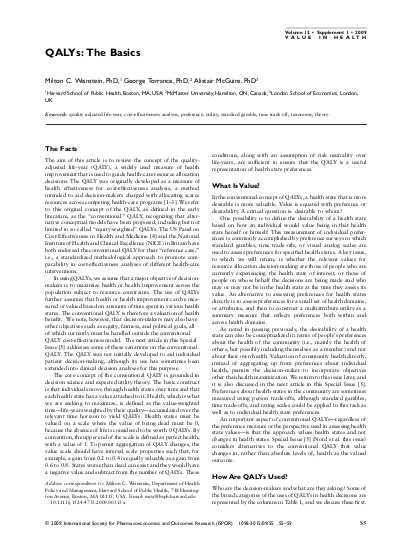
The aim of this article is to review the concept of the quality- adjusted life-year (QALY), a widely used measure of health improvement that is used to guide health-care resource allocation decisions. The QALY was originally developed as a measure of health effectiveness for cost-effectiveness analysis, a method intended to aid decision-makers charged with allocating scarce resources across competing health-care programs [1–3]. We refer to this original concept of the QALY, as defined in the early literature, as the “conventional” QALY, recognizing that alternative conceptual models have been proposed, including but not limited to so-called “equity-weighted” QALYs. The US Panel on Cost-Effectiveness in Health and Medicine [4] and the National Institute of Health and Clinical Excellence (NICE) in Britain have both endorsed the conventional QALY for their “reference case,” i.e., a standardized methodological approach to promote com- parability in cost-effectiveness analyses of different health-care interventions.